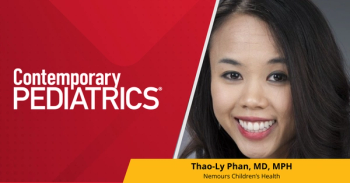
Families in America
It is impossible to appreciate the health and well-being of children without understanding the families in which they live. We can't fix families that are broken, but at least we can recognize where we might be able to fill some of the cracks.
EDITORIAL
Families in America
Julia A. McMillan, MD
The Urban Institute recently released the results of a survey of 44,461households (75,437 adults and 34,439 children) in 13 states, designed toprovide a look at America's families. The survey was conducted from Februaryto November 1997. Some of the findings*:
- 63% of children in the survey live with both biological or adoptive parents; 27% live with one parent; 8% live with a parent and a stepparent (blended household); 3% live with neither parent.
- 20% of children in families surveyed live in poverty, while 43% have low incomes (less than twice the poverty level). The families of 31% of children living with both parents and 35% of children living in blended families have low incomes, but 70% of families in which children live with only one parent have low income.
- 50% of children whose parents weren't married when they were born live below the poverty level; 14% of those born to married parents are poor.
- The survey included questions intended to assess the mental health of parents. Seventeen percent of children in the families surveyed live with a parent whose answers suggest poor mental health. There was a significant difference between parents in low income families (25% have symptoms of poor mental health) and those with higher incomes (10% have symptoms). Parents without a spouse were significantly more likely than those who were married to give answers suggesting poor mental health (28% vs. 13%).
- 82% of the adults surveyed have full- or part-time jobs. Of the married fathers, 94% are employed; of the married mothers, 68%. Not surprisingly, these percentages are reduced among parents in low income families, where 65% of all low income parents and 63% of married low income parents are employed.
It is impossible to appreciate the health and well-being of childrenwithout understanding the families in which they live. We can't fix familiesthat are broken, but at least we can recognize where we might be able tofill some of the cracks.
*For the complete survey see
Julia A. McMillan, MD, Editor-in-chief of Contemporary Pediatrics, isVice Chair, Pediatric Education, and Director, Residency Training,
Johns Hopkins University School of Medicine, Baltimore.
Newsletter
Access practical, evidence-based guidance to support better care for our youngest patients. Join our email list for the latest clinical updates.











